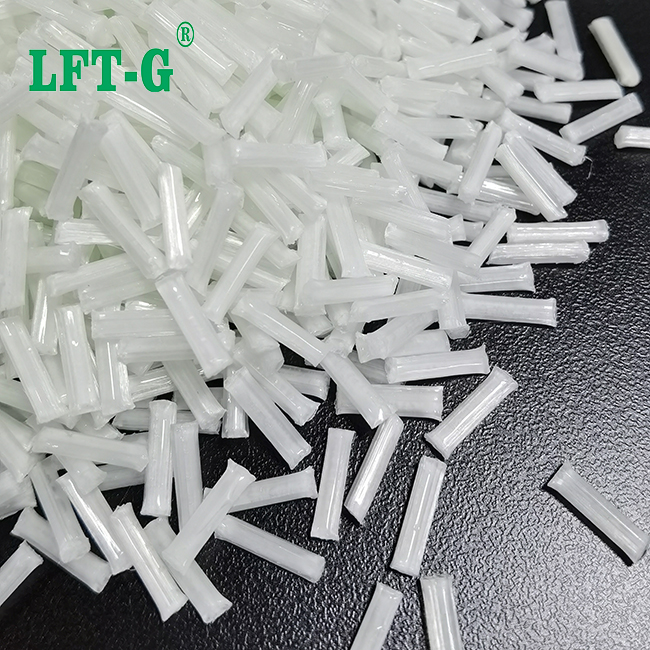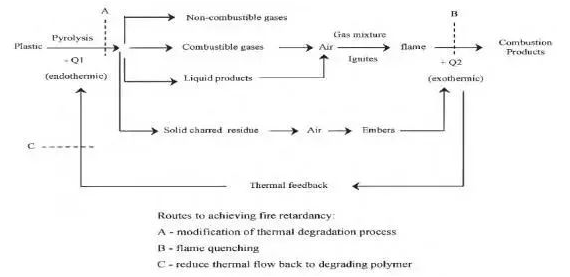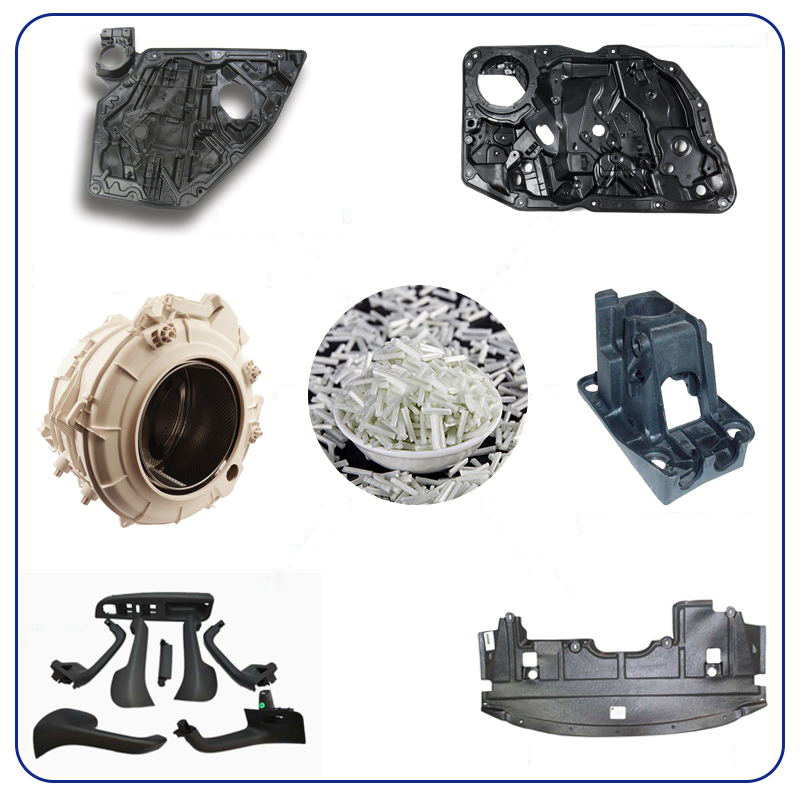new blog
Polypropylene (PP), as one of the five general-purpose plastics, has a wide range of applications in all walks of life, however, the flammable characteristics of PP also limits its application space, hindering the further development of PP materials, so the flame retardant modification of PP has been the focus of attention.

Combustion process and mechanism of polymer materials
Polymer materials are polymer compounds containing carbon, hydrogen, oxygen and other elements in the molecular chain, and most of the polymers are combustible. The combustion of polymer materials is the synthesis of a series of physical changes and chemical reactions, so in the combustion process of polymer materials will show special phenomena such as melting and softening, volume changes. The combustion process of polymer materials, as shown in the figure, can basically be divided into the following three steps:

(1) With the gradual increase in temperature, the weaker bonds in the molecular chain will be broken, and the material begins to undergo thermal decomposition. As the thermal decomposition of polymer materials continue to carry out and intensify, the surface of the material gradually produce small molecules of gas, most of these gases are flammable, these small molecules of flammable gases mixed with oxygen in the air, thus forming a flammable gas mixture;
(2) With the decomposition reaction, the combustible concentration of the gas mixture on the surface of the polymer material gradually increases, and when the concentration of the combustible gas mixture and the external ambient temperature reaches the critical conditions required for combustion, a violent chemical reaction occurs, and the surface of the material is rapidly ignited;
(3) The rapid combustion of the combustible gas mixture releases a large amount of heat, and the heat generated will not only spread to the bottom of the material, but also further increase the temperature of the surrounding environment of the material, thus accelerating the decomposition of the material, which produces more combustible gases, and ultimately makes the combustion reaction continue. Therefore, the combustion of polymer materials can be viewed as a process of gradual promotion and cyclic reaction.
As a hydrocarbon, PP's oxygen index is only 17.4, easy to burn, poor flame retardancy, and greater heat when burning, accompanied by dripping easily caused by fire, posing a threat to life and property. In the field of electronic and electrical appliances, this flammable characteristic of PP limits its wider application, so it is necessary to carry out research and development of flame retardant PP materials.
Flame retardant mechanism can be roughly divided into three categories: chain reaction termination mechanism, surface isolation mechanism and interruption of heat exchange mechanism.
(1) Chain reaction termination mechanism PP combustion, the first decomposition of hydrocarbons, and then further thermal oxidation at high temperatures cracked into free HO-, HO-chain reaction is the reason why the combustion can be sustained combustion, and the termination of the chain reaction is to consume the combustion process produced in the HO-.
(2) surface isolation mechanism PP in the combustion, flame retardant not only absorbs heat, but also in the PP surface to generate solid compounds, the compounds play a role in blocking the matrix and air contact, thus preventing combustion.
(3) Interruption of heat exchange mechanism, the mechanism refers to the flame retardant in the combustion process can absorb a large amount of heat of combustion, so that the combustion reaction lacks sufficient heat, and then self-extinguishing phenomenon, to achieve flame retardant effect.
Flame Retardant PP Inventory
Metal hydroxide flame retardants
Boron flame retardants
Silicon flame retardants
Phosphorus flame retardants
Nitrogen-based flame retardants
Intumescent flame retardant
Applications of Flame Retardant PP Materials
Automobile Battery Shell
Battery is one of the most important parts of new energy vehicles, while the battery shell responsible for protecting the safety of the battery is also particularly important, the requirements of the battery packaging with insulation, impact resistance, corrosion resistance, good flame retardant properties, etc., the traditional battery packaging is mainly for the metal materials and sheet molding plastic (SMC) materials. However, some of these two materials have complex molding process and high density, which affects the lightweight of new energy vehicles, so low density, good impact resistance of PP material has been the attention of the people.
Using PP resin as the matrix, adding long fibers and flame retardant formulations, a PP composite material with flame retardant properties is prepared by melt blending method, which is used as the battery shell of new energy vehicles. This PP material has good flame retardant properties and impact strength while maintaining low density, and has good sealing and waterproof performance.

